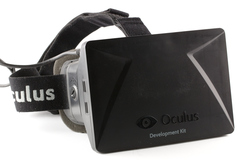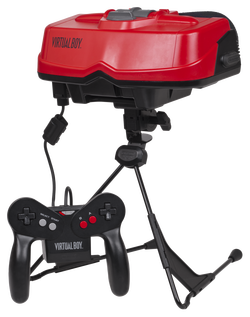
The future seems rosy for virtual reality. With products like the Oculus Rift and Sony’s Project Morpheus for the PS4 currently wowing tech junkies, and rumours abound that Microsoft will announce their own system for the XBOX One it seems more and more likely that there will come a day when we won’t be playing our favourite games in front of the TV, but with a VR headset strapped over our eyes. But while this certainly sounds like an exciting way forward it is not the first time that the gaming community has been promised a Virtual Reality revolution, and as players have consistently sought greater immersion in their gameplay, so too have developers tried to create new technologies that have turned out to be little more than gimmicks in the long run. In many ways the quest for Virtual Reality has become the white whale of the video game industry.

Nintendo’s now infamous attempt in 1995, the Virtual Boy, was very little than a head mounted display with monochrome 3D imagery, and was discontinued after less than a year. This was ultimately a flawed concept from the start with Nintendo entirely missing the mark with what gamers wanted to see from a machine that advertised itself as Virtual Reality. Most of the games released were fairly traditional in design and not unlike what had been seen previously on the SNES, despite being the company’s first 32 bit system and an intended stopover on the way to the release of the N64.
Meanwhile a British company known as Virtuality were developing a range of VR arcade machines which called upon the use of not only headsets but a number of game specific motion guided controllers. Sadly in the end these proved to be one of those quaint little side lanes in gaming history that people only truly remember for sucking money out of their wallets while making them feel dizzy. Virtuality also declined rapidly with other arcade systems as home consoles grew in popularity with the arrival of the 64 bit era. Certainly by the end of the 90’s the love affair was over and developers had since learned a valuable lesson in running away with technology before it was fully perfected; and at the same time, the simple childlike innocence of gamers had been tarnished and everyone had become a little more cynical.

While the most enduring image of the term is that of sci-fi like goggles transporting us to digital locals, virtual reality isn’t just about what we see. In the end it is about developing a truly immerse experience for all our senses. It is for this reason that now all first person shooters, no matter what console you play on, use the right trigger to fire; it is simply the most realistic for us. This is also probably best experienced by hardcore flight simulator enthusiasts who forever seek the best flight sticks, throttles, peddles and instrumentation in an effort to fool themselves into thinking they are flying a real life aircraft, often complete with multiple screens to provide a full panoramic view.
There are other products in development that aim to provide a similar sort of experience to the realm of first person gaming.

At the prospect of all this many gamers may currently be checking their bank accounts and trying to decide if they can wrangle up a spare grand by selling one of their kidneys, which is where this quest for the perfect, immersive gaming experience falls on its face.
All but the most hardcore gamers will more or less rule out the majority of the above mentioned hardware. It might all sound excellent in theory but most of us don’t have enough money or room for such a huge set up. Not to mention that as much as we may not wish to admit it, it is an awful lot of physical exertion. After all, most of us stopped getting off the sofa to play Wii Sports after just the first week, what hope do we have of actually needing to run for cover when being shot at on Call of Duty?
For casual gamers then the full Virtual Reality experience is more or less out of our reach. And while chances are this new generation of VR headsets will find a market and prove to be a success, I doubt that it’ll have the immediate ground shaking effect some are saying it will. For most casual gamers, these head displays will just be seen as another gimmick that simply attempts to put them closer to the TV screen.
However, having said that, I do not think that developers of such technology should be all that discouraged. For the time being I think it’s safe to say that VR will remain a niche market, but with how far the technology has developed I would not be at all surprised to see the headsets as standard equipment in future consoles. In the same way that gesture and motion controls have now become a part of all the consoles in one form or another I can foresee that VR headsets will likely be the next addition to what we can expect in future gaming. In the meantime, at least it’s something new for the ardent flight simulator enthusiast.

 RSS Feed
RSS Feed
